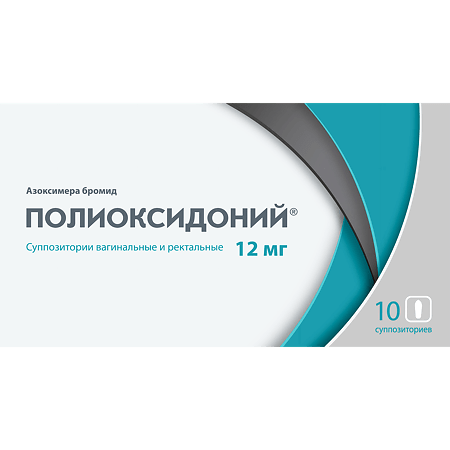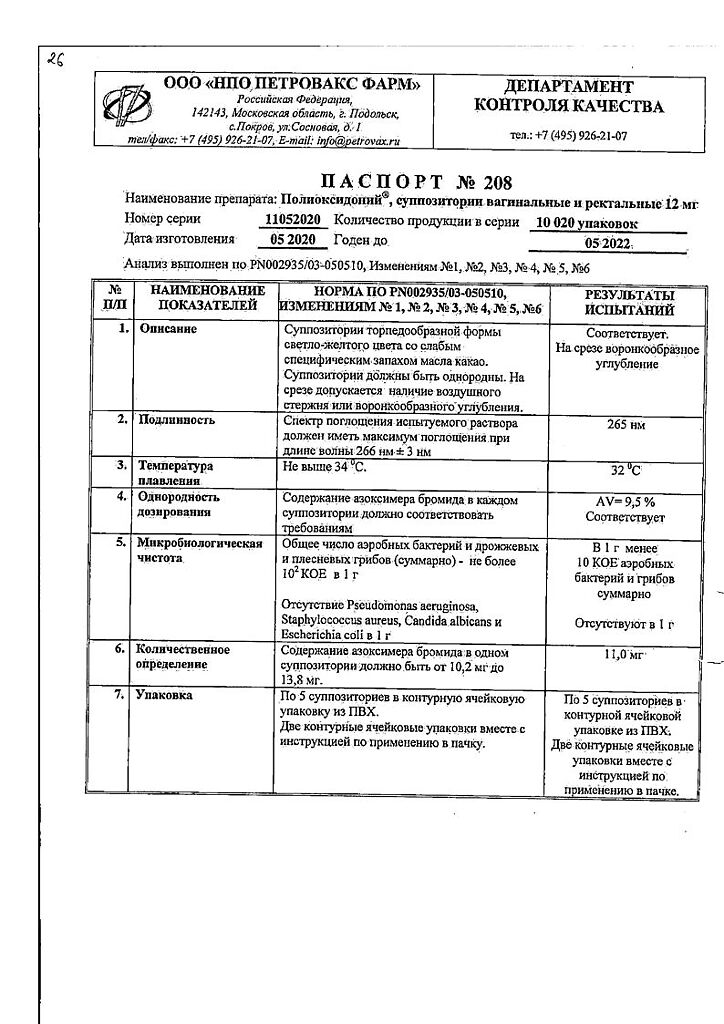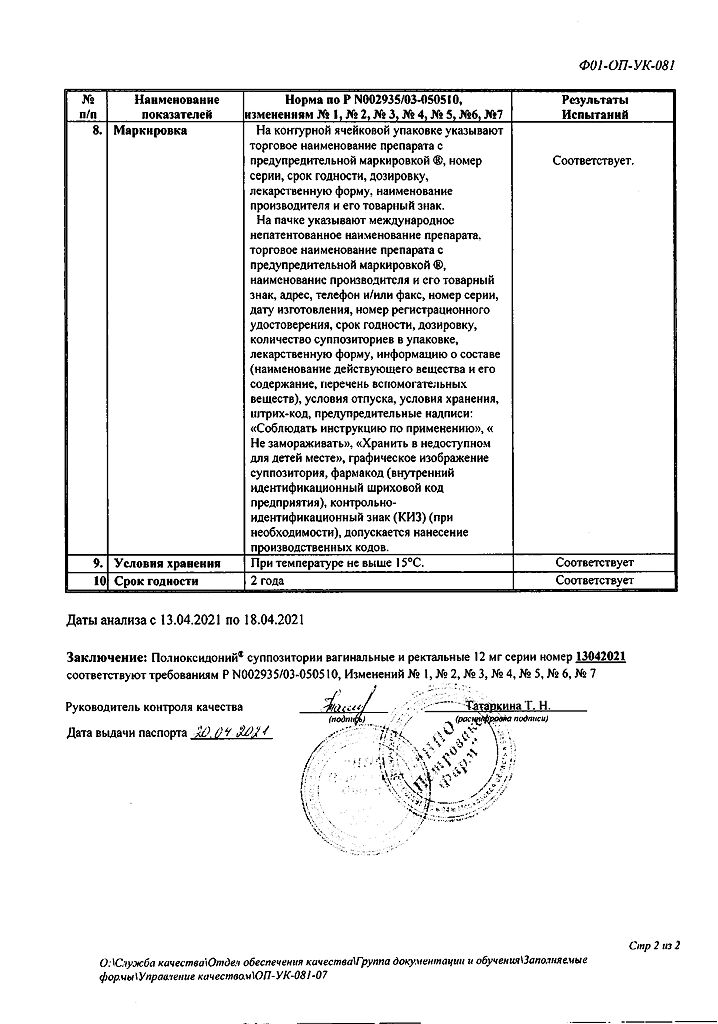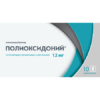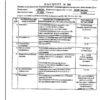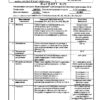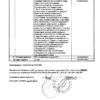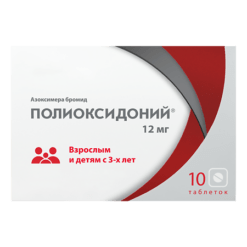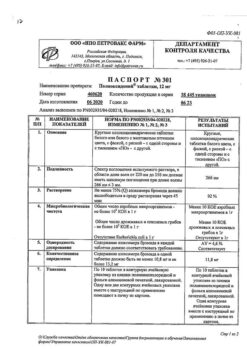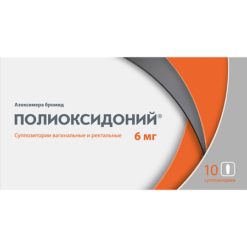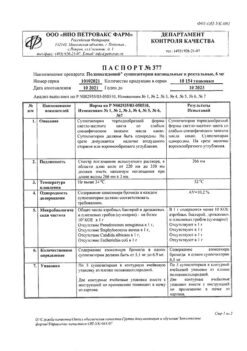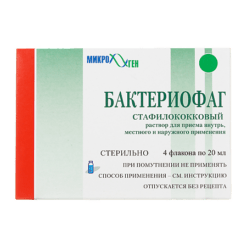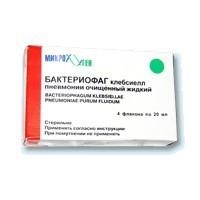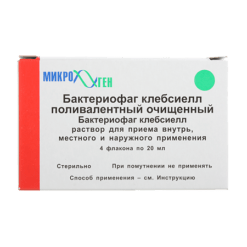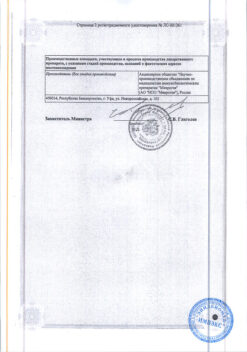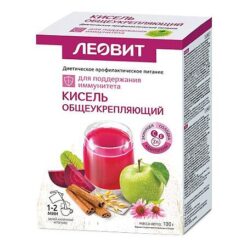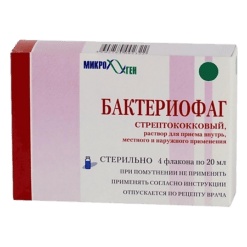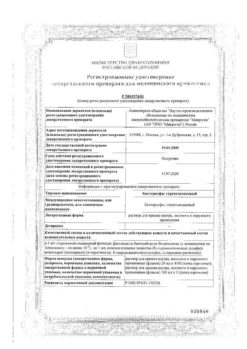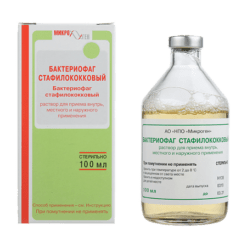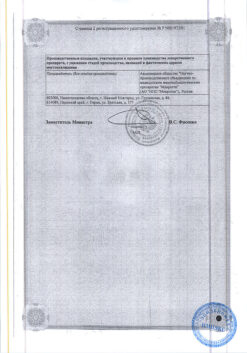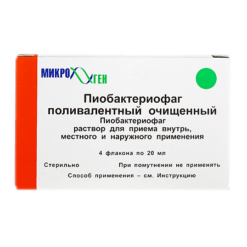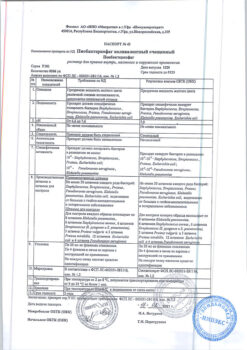No products in the cart.
Polyoxidonium, vaginal and rectal suppositories 12 mg 10 pcs
€31.91 €27.65
Description
Azoximera bromide has a complex immunomodulatory, detoxifying, antioxidant, moderate anti-inflammatory action.
The basis of the mechanism of immunomodulatory action of azoximer bromide is direct effect on phagocytic cells and natural killer cells as well as stimulation of antibody formation, synthesis of interferon-alpha and interferon-gamma.
The detoxifying and antioxidant properties of azoximer bromide are largely determined by the structure and high molecular weight nature of the drug.
Azoximera bromide increases resistance of the body against local and generalized infections of bacterial, fungal and viral etiology. It restores immunity in conditions of secondary immunodeficiency caused by various infections, injuries, complications of surgery, burns, autoimmune diseases, malignant tumors, chemotherapy drugs, cytostatics, steroid hormones.
A characteristic feature of azoximer bromide when applied topically (intranasally, sublingually) is the ability to activate the body’s early defense factors against infection: the drug stimulates the bactericidal properties of neutrophils, macrophages and increases their ability to engulf bacteria, increases the bactericidal properties of saliva and mucous secretions of the upper respiratory tract.
Azoximer bromide blocks soluble toxic substances and microparticles, has the ability to remove toxins and salts of heavy metals from the body, and inhibits lipid peroxidation through both interception of free radicals and elimination of catalytically active Fe2+ ions.
Azoximer bromide reduces the inflammatory response by normalizing the synthesis of pro- and anti-inflammatory cytokines.
Azoximera bromide is well tolerated, has no mitogenic, polyclonal activity, antigenic properties, has no allergic, mutagenic, embryotoxic, teratogenic and carcinogenic action. Azoximer bromide is odorless and tasteless, has no local irritant effect when applied to the mucous membranes of the nose and oropharynx.
Indications
Indications
In adults and children over 6 years of age – treatment and prevention of infectious and inflammatory diseases (viral, bacterial and fungal etiology), in the acute and remission stages.
For treatment (in complex therapy):
acute and exacerbation of chronic recurrent infectious and inflammatory diseases of various localization, bacterial, viral and fungal etiology;
inflammatory diseases of the urogenital tract (urethritis, cystitis, pyelonephritis, prostatitis, salpingoophoritis, endomyometritis, colpitis, cervicitis, cervicosis, bacterial vaginosis);
various forms of pulmonary tuberculosis;
allergic diseases (including hay fever, bronchial asthma, atopic dermatitis), complicated by recurrent bacterial, fungal and viral infections;
rheumatoid arthritis, complicated by recurrent bacterial, fungal and viral infections, due to long-term use of immunosuppressants;
to activate regenerative processes (fractures, burns, trophic ulcers);
in oncology during and after chemotherapy and radiation therapy – a decrease in the immunosuppressive, nephro- and hepatotoxic effects of drugs.
For prevention (monotherapy):
recurrent herpetic infection of the urogenital tract;
exacerbation of chronic foci of infections;
influenza and other acute respiratory infections in the pre-epidemic and epidemic periods in immunocompromised individuals;
secondary immunodeficiencies resulting from aging or exposure to adverse factors.
Pharmacological effect
Pharmacological effect
Azoximer bromide has a complex immunomodulatory, detoxifying, antioxidant, and moderate anti-inflammatory effect.
The basis of the mechanism of immunomodulatory action of azoximer bromide is a direct effect on phagocytic cells and natural killer cells, as well as stimulation of antibody formation, the synthesis of interferon-alpha and interferon-gamma.
The detoxification and antioxidant properties of azoximer bromide are largely determined by the structure and high-molecular nature of the drug.
Azoximer bromide increases the body’s resistance to local and generalized infections of bacterial, fungal and viral etiology. Restores immunity in secondary immunodeficiency conditions caused by various infections, injuries, complications after surgery, burns, autoimmune diseases, malignant neoplasms, the use of chemotherapeutic agents, cytostatics, steroid hormones.
A characteristic feature of azoximer bromide when applied locally (intranasally, sublingually) is the ability to activate factors of the body’s early defense against infection: the drug stimulates the bactericidal properties of neutrophils, macrophages, enhances their ability to absorb bacteria, increases the bactericidal properties of saliva and secretions of the mucous membranes of the upper respiratory tract.
Azoximer bromide blocks soluble toxic substances and microparticles, has the ability to remove toxins and heavy metal salts from the body, and inhibits lipid peroxidation, both by intercepting free radicals and by eliminating catalytically active Fe2+ ions.
Azoximer bromide reduces the inflammatory response by normalizing the synthesis of pro- and anti-inflammatory cytokines.
Azoximer bromide is well tolerated, does not have mitogenic, polyclonal activity, antigenic properties, does not have allergenic, mutagenic, embryotoxic, teratogenic and carcinogenic effects. Azoximer bromide is odorless and tasteless, and does not have a local irritant effect when applied to the mucous membranes of the nose and oropharynx.
Special instructions
Special instructions
If an allergic reaction develops, you should stop using the drug Polyoxidonium® and consult a doctor.
If it is necessary to stop taking the drug Polyoxidonium®, discontinuation can be done immediately, without gradually reducing the dose.
If you miss the next dose of the drug, its subsequent use should be carried out as usual, as indicated in these instructions or recommended by your doctor. The patient should not administer a double dose to compensate for missed doses.
Do not use the drug if there are visual signs of its unsuitability (packaging defect)
Active ingredient
Active ingredient
Azoximer bromide
Composition
Composition
Composition per suppository:
Active substance:
azoximer bromide – 12 mg
Excipients (for dosage 12 mg):
mannitol – 3.6 mg;
povidone K17 – 2.4 mg;
cocoa butter – 1282 mg
Pregnancy
Pregnancy
Polyoxidonium is contraindicated during pregnancy, breastfeeding and children under 6 months (there is no clinical experience with its use).
Contraindications
Contraindications
increased individual sensitivity;
acute renal failure;
pregnancy (no clinical experience of use);
lactation period;
children under 6 years of age.
With caution
Chronic renal failure (used no more than 2 times a week).
Side Effects
Side Effects
Very rarely – local reactions in the form of redness, swelling, itching of the perianal area, vaginal itching (due to individual sensitivity to the components of the drug).
Interaction
Interaction
No drug interactions have been established. It is possible to use Polyoxidonium® with many drugs, including compatibility with antibiotics, antiviral, antifungal and antihistamines, bronchodilators, corticosteroids, cytostatics and β-adrenergic agonists.
Azoximer bromide does not inhibit the cytochrome P450 isoenzymes CYP1A2, CYP2C9, CYP2C19, CYP2D6, therefore the drug is compatible with antibiotics, antiviral, antifungal and antihistamines, corticosteroids and cytostatics.
If the patient is taking the above or other medications (including over-the-counter medications), you should consult your doctor before starting to take Polyoxidonium®.
Overdose
Overdose
Cases of overdose of the drug Polyoxidonium® are unknown.
Recommendations for use
Recommendations for use
The drug should be used only according to the indications, the method of administration and in the doses indicated in the instructions. If there is no improvement after treatment, or symptoms worsen, or new symptoms appear, you should consult your doctor.
Once a day, every day, every other day or 2 times a week.
If necessary, repeated courses of therapy are possible after 3–4 months. When the drug is re-prescribed, its effectiveness does not decrease.
Recommended regimens for use of the drug
For treatment in adults:
– rectally 1 sup. 1 time per day after bowel cleansing;
– vaginally for gynecological diseases, 1 supp. Once a day (at night) it is inserted into the vagina in a lying position.
Directions for use and doses for adults
– for chronic infectious and inflammatory diseases in the acute stage – suppositories 12 mg once a day every day for 3 days, then every other day. Course of treatment – 10 supp.;
– for acute infectious processes and to activate regenerative processes (fractures, burns, trophic ulcers) – suppositories 12 mg 1 time per day, daily. Course of treatment – 10 supp.;
– for gynecological diseases – suppositories 12 mg 1 time per day every day for 3 days, then every other day. Course of treatment 10 supp.;
– for exacerbation of urological diseases (urethritis, pyelonephritis, cystitis, prostatitis) – suppositories 12 mg 1 time per day daily. Course of treatment – 10 supp.;
– for pulmonary tuberculosis – suppositories 12 mg 1 time per day daily for 3 days, then every other day. Course of treatment 20 sup. Further, it is possible to use maintenance therapy – suppositories 6 mg 2 times a week, for a course of up to 2-3 months;
– in complex therapy of oncological diseases during chemotherapy and radiation therapy – suppositories 12 mg daily 2-3 days before the start of the course of chemotherapy or radiation therapy. Next – 12 mg 2 times a week, for a course of up to 20 sup.;
– for allergic diseases complicated by infectious syndrome – suppositories 12 mg 1 time per day daily. Course of treatment – 10 supp.;
– for rheumatoid arthritis – suppositories 12 mg every other day. Course of treatment – 10 supp.
For prevention (monotherapy):
– exacerbations of chronic foci of infections – 10 sup.;
– influenza and ARVI – suppositories 12 mg 1 time per day. Course – 10 supp.;
– secondary immunodeficiencies arising due to aging – suppositories 12 mg 2 times a week. Course – 10 supp., 2-3 times a year.
For the treatment of children and adolescents from 6 to 18 years of age:
For children and adolescents from 6 to 18 years old, suppositories are administered only rectally, 1 suppository. 6 mg 1 time per day after bowel cleansing:
– for chronic infectious and inflammatory diseases in the acute stage – suppositories 6 mg once a day every day for 3 days, then every other day. Course of treatment – 10 supp.;
– for acute infectious processes and to activate regenerative processes (fractures, burns, trophic ulcers) – suppositories 6 mg 1 time per day, daily. Course of treatment – 10 supp.;
– for exacerbation of urological diseases (urethritis, pyelonephritis, cystitis, prostatitis) – suppositories 6 mg 1 time per day daily. Course of treatment – 10 supp.;
– for pulmonary tuberculosis – suppositories 6 mg once a day every day for 3 days, then every other day. The course of treatment is 20 supp. Further, it is possible to use maintenance therapy – suppositories 6 mg 2 times a week, for a course of up to 2-3 months;
– in complex therapy of oncological diseases during chemotherapy and radiation therapy – suppositories 6 mg daily 2-3 days before the start of the course of chemotherapy or radiation therapy. Next – 6 mg 2 times a week, for a course of up to 20 sup.;
– for allergic diseases complicated by an infectious syndrome – suppositories 6 mg 1 time per day daily. Course of treatment – 10 supp.;
– for rheumatoid arthritis – 6 mg suppositories every other day. Course of treatment – 10 supp.
For prevention (monotherapy):
– exacerbations of chronic foci of infections, recurrent herpetic infections of the urogenital tract – suppositories 6 mg every other day. Course – 10 supp.;
– influenza and ARVI – suppositories 6 mg 1 time per day. Course – 10 supp.
For patients receiving long-term immunosuppressive therapy, cancer patients, those exposed to radiation, and those with an acquired immune system defect (HIV), long-term maintenance therapy with Polyoxidonium® is indicated for 2-3 months to 1 year (adults – 12 mg, children over 6 years – 6 mg 1-2 times a week).
Functional features
Functional features
Suppositories: when administered rectally, it has high bioavailability (at least 70%), reaching Cmax in the blood 1 hour after administration. The half-life of distribution is about 0.5 hours, the half-life of elimination is 36.2 hours.
In the body it is hydrolyzed to oligomers, which are excreted primarily by the kidneys. There is no cumulative effect.
Storage conditions
Storage conditions
In a dry place, protected from light, at a temperature of 2 to 15 ° C. Keep away from children.
Shelf life
Shelf life
2 years. The drug should not be used after the expiration date indicated on the package.
Manufacturer
Manufacturer
NPO Petrovax Pharm, Russia
Additional information
| Shelf life | 2 years. Do not use the drug after the expiration date stated on the package. |
|---|---|
| Conditions of storage | In a dry place protected from light at a temperature of 2 to 15 ° C. Keep out of the reach of children. |
| Manufacturer | NPO Petrovax Pharm, Russia |
| Medication form | Vaginal and rectal suppositories |
| Brand | NPO Petrovax Pharm |
Other forms…
Related products
Buy Polyoxidonium, vaginal and rectal suppositories 12 mg 10 pcs with delivery to USA, UK, Europe and over 120 other countries.

